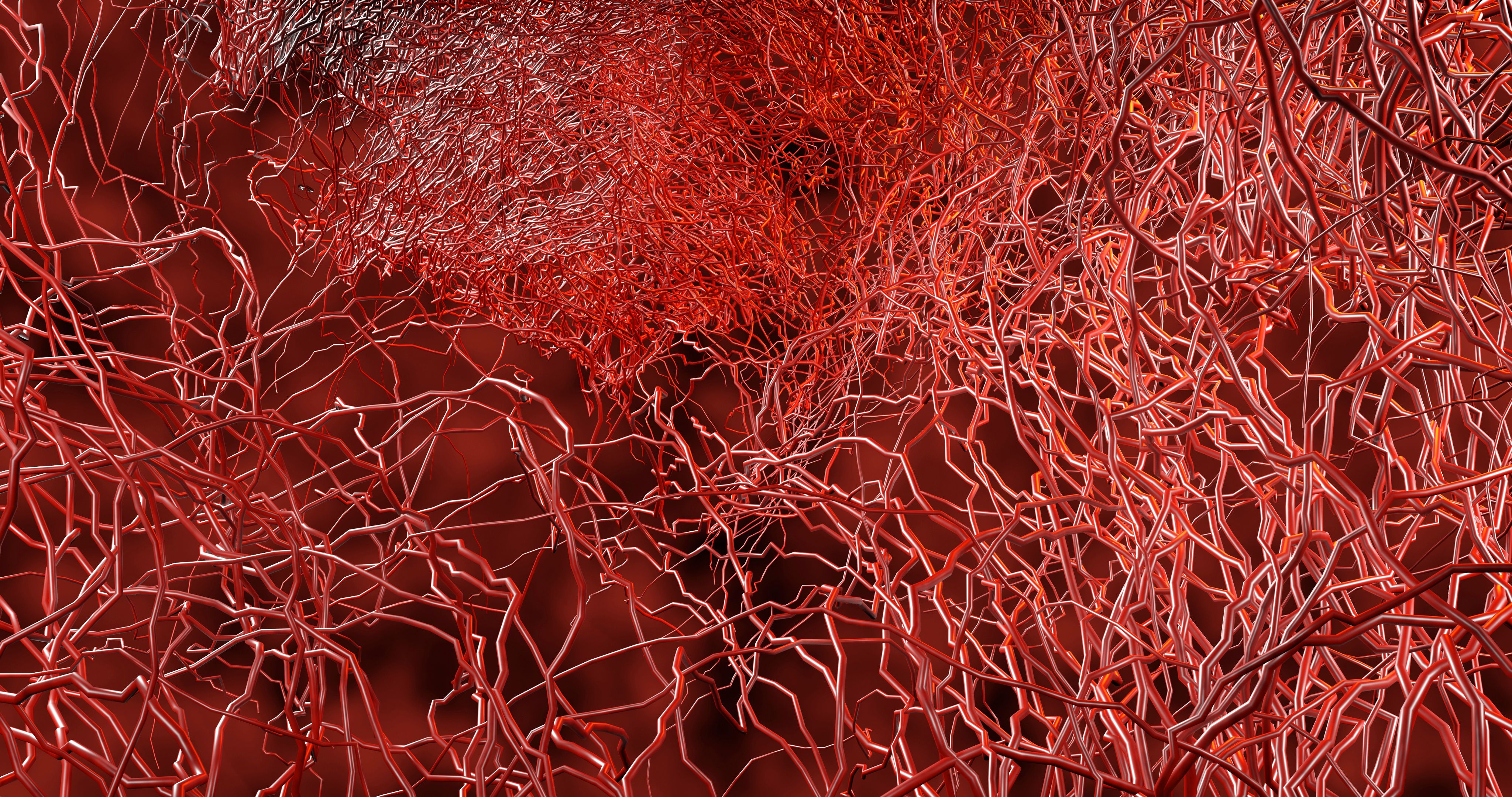- Center on Health Equity & Access
- Clinical
- Health Care Cost
- Health Care Delivery
- Insurance
- Policy
- Technology
- Value-Based Care
Cognitive Health Unaffected by Diluted Perivascular Spaces in Children With SCD
An investigation into the burden of dilated perivascular spaces (dPVS) in children with sickle cell disease (SCD) confirmed that those with SCD experience more severe manifestations of dPVS compared with the general population.
New research indicates that children and adolescents with sickle cell disease (SCD) have more intense manifestation and burden of dilated perivascular spaces (dPVS) compared to those without SCD, according to Pediatric Blood & Cancer.1
A perivascular space (PVS) refers to a fluid-filled space that encompasses venules, capillaries, and smaller arterioles in an individual’s brain | image credit: Narin Sapaisarn - stock.adobe.com

A perivascular space (PVS) refers to a fluid-filled space that encompasses venules, capillaries, and smaller arterioles in an individual’s brain, often extending to the basal ganglia (BG).2 These occurrences can be very common, and detecting the presence of a PVSs has only become easier with the advancement MRI imaging resolutions. Over 50% of patients may exhibit PVS depending on the definition criteria; however, to this day very little knowledge exists regarding the function and anatomy of these developments.
PVSs and dPVS are considered normal and do not necessarily indicate the development of a malignant pathology; however, as the present authors note, the burden of dPVS can intensify with age and eventually be associated with various neuroinflammatory or neurodegenerative disorders, including cerebral small vessel disease (CVSD).1 The burden of dPVS has not been sufficiently studied, they continued. Furthermore, children and adults with SCD can exhibit various cognitive deficits or neurological injury that could be related to their disease. With these realities in mind, the authors ventured to investigate the burden of dPVS—on the regional and global level—throughout children with SCD. Additionally, they examined the possible association between dPVS burden and SCD severity, chronic blood transfusion therapy, and full-scale intelligence quotient.
Data were gathered from MRIs taken in the Silent Cerebral Infarct Transfusion (SIT) trial, which was a randomized, multicenter, single-blinded study that assessed the impact of monthly chronic transfusions on incidence of silent cerebral infarctions (SCI) in children with SCD. In this study, participants aged 5-15 years, who had at least one identified SCI on an MRI, were split into 2 groups for a 36-month study period: observation or monthly blood transfusion (chronic transfusion therapy [CTT]). Following this period, a second MRI was conducted for each child.
The present authors’ analysis included 156 of the 196 (80%) participants from the SIT trial. Individuals’ dPVS burden was quantified throughout the BG and centrum semiovale (CS) using the Standards for ReportIng Vascular changes on nEuroimaging (STRIVE) criteria. The maximum possible dPVS score, signifying more intense burden, was 9. Additional cognitive data were collected with the use of full-scale intelligence quotient (FSIQ), verbal intelligence quotient (VIQ) and performance intelligence quotient (PIQ).
Participants were enrolled for a median time of just over 3 years and were a median age of 9.6 years. A high dPVS burden in the BG and CSO was identified in 35% (n = 55) and 43% (n = 63) of participants, respectfully. At baseline, the authors noted that lower dPVS burden in the CSO significantly correlated with older age (P = .01).
A total of 140 participants had FSIQ, VIQ, and PIQ data available. The authors did not find a significant association between these scores and individual dPVS burden, although SCI is typically linked to worse performance in these measures.
As the authors concluded, they emphasized how the etiology for dPVS that occur in children with SCD is still misunderstood. Their results did not indicate any relationship between the presence of dPVS and the size or number of SCI—which is a common marker of CSVD for those affected by SCD.
“While SCD-related vasculopathy includes damage to vessel walls from chronic hemolytic anemia and free radical formation, hypoxemia from severe anemia, and decreased cerebral blood flow compared to those without SCD, CVSD in elderly adults without SCD is associated with vascular risk factors including hypertension, smoking history, obstructive sleep apnea, and diabetes mellitus,” they wrote. “Thus, it is conceivable that dPVS in children with SCD are not due to the same pathophysiological mechanisms that result in SCI, but rather are secondary to a different etiology, such as neuroinflammation.”
Considering their results, an increasing speculation about the role of neuroinflammation as a mechanism for dPVS in SCD should inform future studies that examine the etiology of dPVS in this patient population more thoroughly.
References
1. Karkoska KA, Gollamudi J, Sawyer RP, Woo D, Hyacinth HI. Quantifying dilated perivascular spaces in children with sickle cell disease. Pediatr Blood Cancer. 2024:e31150. doi:10.1002/pbc.31150
2. Bell DJ. Perivascular spaces. Radiopaidia.org. Updated April 28, 2024. Accessed July 8, 2024. https://radiopaedia.org/articles/perivascular-spaces?lang=us
First Subcutaneous Prophylaxis for Hemophilia A and B With Inhibitors Approved by FDA
December 23rd 2024The approval of concizumab-mtci (Alhemo) injection marks a significant milestone in managing hemophilia A and B with inhibitors by preventing or reducing bleeding episodes in adults and children 12 years and older.
Read More
